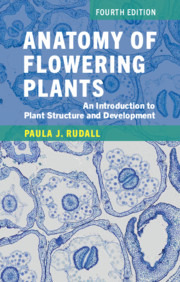1 - Organs, cells and tissues
Published online by Cambridge University Press: 02 November 2020
Summary
Plants are essentially modular organisms; each individual plant consists of distinct but connected organs. In their turn, the organs are composed of cells, which are mostly grouped into tissues. Vegetative organs support photosynthesis and plant growth, and reproductive organs enable sexual reproduction. In seed plants, the primary vegetative organs are the root, stem and leaf (Figure 1.1). Roots and stems have well-defined growing points at their apices, but the leaves are determinate lateral organs that stop growing when they reach a particular size and shape. When a seed germinates, the seed coat (testa) is ruptured and the embryonic structures emerge from opposite poles of the embryo: a seedling root (radicle) grows downwards from the root apex and a seedling axis (hypocotyl) bears the first leaves (cotyledons) and the shoot apex, which ultimately develops new foliage leaves.
- Type
- Chapter
- Information
- Anatomy of Flowering PlantsAn Introduction to Plant Structure and Development, pp. 1 - 23Publisher: Cambridge University PressPrint publication year: 2020



